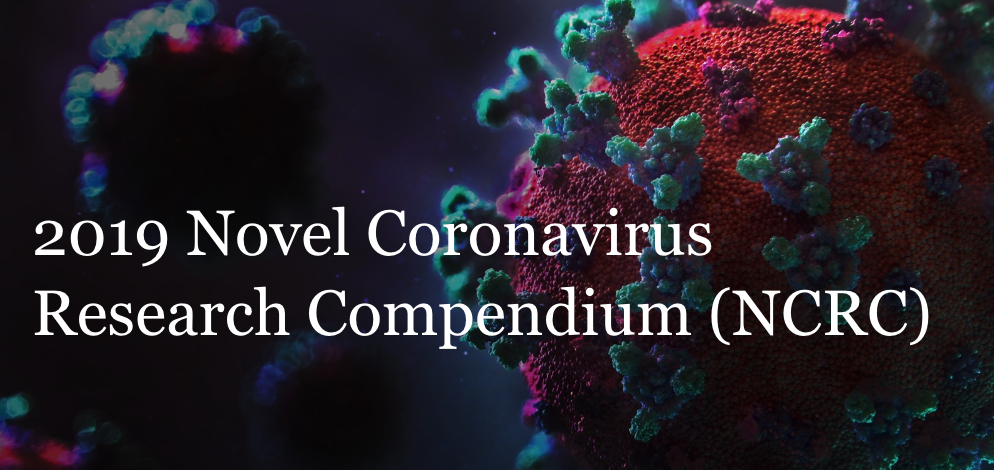Different dose regimens of a SARS-CoV-2 recombinant spike protein vaccine (NVX-CoV2373) in younger and older adults: A phase 2 randomized placebo-controlled trial
This article has been Reviewed by the following groups
Discuss this preprint
Start a discussion What are Sciety discussions?Listed in
- Evaluated articles (ScreenIT)
- Evaluated articles (NCRC)
- High interest articles (NCRC)
Abstract
NVX-CoV2373 is a recombinant severe acute respiratory coronavirus 2 (rSARS-CoV-2) nanoparticle vaccine composed of trimeric full-length SARS-CoV-2 spike glycoproteins and Matrix-M1 adjuvant.
Methods and findings
The phase 2 component of our randomized, placebo-controlled, phase 1 to 2 trial was designed to identify which dosing regimen of NVX-CoV2373 should move forward into late-phase studies and was based on immunogenicity and safety data through Day 35 (14 days after the second dose). The trial was conducted at 9 sites in Australia and 8 sites in the United States. Participants in 2 age groups (aged 18 to 59 and 60 to 84 years) were randomly assigned to receive either 1 or 2 intramuscular doses of 5-μg or 25-μg NVX-CoV2373 or placebo, 21 days apart. Primary endpoints were immunoglobulin G (IgG) anti-spike protein response, 7-day solicited reactogenicity, and unsolicited adverse events. A key secondary endpoint was wild-type virus neutralizing antibody response. After enrollment, 1,288 participants were randomly assigned to 1 of 4 vaccine groups or placebo, with 1,283 participants administered at least 1 study treatment. Of these, 45% were older participants 60 to 84 years. Reactogenicity was predominantly mild to moderate in severity and of short duration (median <3 days) after first and second vaccination with NVX-CoV2373, with higher frequencies and intensity after second vaccination and with the higher dose. Reactogenicity occurred less frequently and was of lower intensity in older participants. Both 2-dose regimens of 5-μg and 25-μg NVX-CoV2373 induced robust immune responses in younger and older participants. For the 2-dose regimen of 5 μg, geometric mean titers (GMTs) for IgG anti-spike protein were 65,019 (95% confidence interval (CI) 55,485 to 76,192) and 28,137 (95% CI 21,617 to 36,623) EU/mL and for wild-type virus neutralizing antibody (with an inhibitory concentration of 50%—MN 50% ) were 2,201 (95% CI 1,343 to 3,608) and 981 (95% CI 560 to 1,717) titers for younger and older participants, respectively, with seroconversion rates of 100% in both age groups. Neutralizing antibody responses exceeded those seen in a panel of convalescent sera for both age groups. Study limitations include the relatively short duration of safety follow-up to date and current lack of immune persistence data beyond the primary vaccination regimen time point assessments, but these data will accumulate over time.
Conclusions
The study confirmed the phase 1 findings that the 2-dose regimen of 5-μg NVX-CoV2373 is highly immunogenic and well tolerated in younger adults. In addition, in older adults, the 2-dose regimen of 5 μg was also well tolerated and showed sufficient immunogenicity to support its use in late-phase efficacy studies.
Trial registration
ClinicalTrials.gov NCT04368988 .
Article activity feed
-
-

SciScore for 10.1101/2021.02.26.21252482: (What is this?)
Please note, not all rigor criteria are appropriate for all manuscripts.
Table 1: Rigor
Institutional Review Board Statement Consent: All participants provided written informed consent prior to trial enrollment.
IRB: The trial protocol was approved by the Alfred Hospital Human Research Ethics Committee (Melbourne, Australia) and Advarra Central Institutional Review Board (Colombia, Maryland, USA) and was performed in accordance with the International Conference on Harmonisation, Good Clinical Practice guidelines.Randomization Approximately 750 participants were planned to be randomized in each country. Blinding Eligible participants were randomly assigned (1:1:1:1:1) in a blinded manner to one of five vaccine groups (groups A, B, C, D, and E) according to pre-generated randomization … SciScore for 10.1101/2021.02.26.21252482: (What is this?)
Please note, not all rigor criteria are appropriate for all manuscripts.
Table 1: Rigor
Institutional Review Board Statement Consent: All participants provided written informed consent prior to trial enrollment.
IRB: The trial protocol was approved by the Alfred Hospital Human Research Ethics Committee (Melbourne, Australia) and Advarra Central Institutional Review Board (Colombia, Maryland, USA) and was performed in accordance with the International Conference on Harmonisation, Good Clinical Practice guidelines.Randomization Approximately 750 participants were planned to be randomized in each country. Blinding Eligible participants were randomly assigned (1:1:1:1:1) in a blinded manner to one of five vaccine groups (groups A, B, C, D, and E) according to pre-generated randomization schedules with two-factor, two-level stratification employed (ages 18-59 and 60-84 years; study site) (Fig. 1). Power Analysis With at least 150 participants in each vaccine group, there was more than adequate power to detect differences in IgG anti-spike protein responses and safety data between vaccine groups. Sex as a biological variable Eligible participants were men and non-pregnant women 18 to 84 years of age with a body mass index (the weight in kilograms divided by the square of the height in meters) of 17 to 35. Table 2: Resources
No key resources detected.
Results from OddPub: We did not detect open data. We also did not detect open code. Researchers are encouraged to share open data when possible (see Nature blog).
Results from LimitationRecognizer: An explicit section about the limitations of the techniques employed in this study was not found. We encourage authors to address study limitations.Results from TrialIdentifier: We found the following clinical trial numbers in your paper:
Identifier Status Title NCT04368988 Active, not recruiting Evaluation of the Safety and Immunogenicity of a SARS-CoV-2 … Results from Barzooka: We did not find any issues relating to the usage of bar graphs.
Results from JetFighter: We did not find any issues relating to colormaps.
Results from rtransparent:- Thank you for including a conflict of interest statement. Authors are encouraged to include this statement when submitting to a journal.
- Thank you for including a funding statement. Authors are encouraged to include this statement when submitting to a journal.
- No protocol registration statement was detected.
-

Our take
Vaccines using the nanoparticle/Matrix-M1 adjuvant approach, like NVX-CoV2373 (Novavax), have been widely studied and have a very acceptable safety profile. This phase 2 trial report, available as a preprint and thus not yet peer-reveiwed, found that both the 5ug and 25ug doses of NVX-CoV2373 were effective at inducing production of IgG and neutralizing antibodies, while the 25ug dose had a higher incidence of local reactogenicity in both younger and older adults. Therefore, Novavax will move forward with a 2-dose regimen of 5ug NVX-CoV2373 administered 21 days apart in phase 3 trials. Trials are currently ongoing in South Africa, the UK, the US, and Mexico.
Study design
randomized-controlled-trial
Study population and setting
This paper described the phase 2 trial of the Novavax vaccine, …
Our take
Vaccines using the nanoparticle/Matrix-M1 adjuvant approach, like NVX-CoV2373 (Novavax), have been widely studied and have a very acceptable safety profile. This phase 2 trial report, available as a preprint and thus not yet peer-reveiwed, found that both the 5ug and 25ug doses of NVX-CoV2373 were effective at inducing production of IgG and neutralizing antibodies, while the 25ug dose had a higher incidence of local reactogenicity in both younger and older adults. Therefore, Novavax will move forward with a 2-dose regimen of 5ug NVX-CoV2373 administered 21 days apart in phase 3 trials. Trials are currently ongoing in South Africa, the UK, the US, and Mexico.
Study design
randomized-controlled-trial
Study population and setting
This paper described the phase 2 trial of the Novavax vaccine, NVX-CoV2373, which is composed of trimeric full-length SARS-CoV-2 spike proteins and adjuvant. The trial took place between August 24 and September 25, 2020. 1283 participants in two age groups were studied: younger (18-59 years) and older (60-84 years) adults, at nine sites in Australia and eight sites in the US. Participants received either one or two doses of 5ug or 25ug NVX-CoV2373 or placebo 21 days apart. Immunogenicity and safety data were studied through day 35, including adverse events, reactogenicity within 7 days of receiving the vaccine, IgG response, and neutralizing antibody production.
Summary of main findings
The most commonly reported local adverse events were pain and tenderness at the injection site, while the most common systemic adverse events were muscle pain, fatigue, headache, and malaise. Fever was only reported in less than 2% of all participants. Reactogenicity occurred at higher frequency in younger participants compared to older participants, and the systemic reactions were also more common after the second dose. Seroconversion rates of IgG production were 99% and 100% (younger participants) and 97% and 99% (older participants) after 2 doses of 5ug or 25ug, respectively. Additionally, seroconversion of neutralizing antibodies were 100% and 100% (younger participants) and 100% and 96% (older participants) after 2 doses of 5ug or 25ug, respectively. Higher amounts of neutralizing antibodies were detected in both younger and older participants compared to convalescent sera.
Study strengths
This vaccine uses a recombinant protein approach, which is different than the other already approved COVID-19 vaccines, making it novel. This trial studied multiple doses and dosing regimens for NVX-CoV2373, and also included both younger and older adults.
Limitations
The study included 87% white participants. Future trials for NVX-CoV2373 included a more diverse population in South Africa and Mexico, but these data are not reported here. No analysis of T-cells was included here, only study of antibodies, even though no true correlate of vaccine protection has been defined. Finally, data was only published here for observations through day 35, so no-long term data is provided yet.
Value added
First report of phase 2 results from the Novavax NVX-CoV2373 vaccine, with results in both younger and older adults
-


